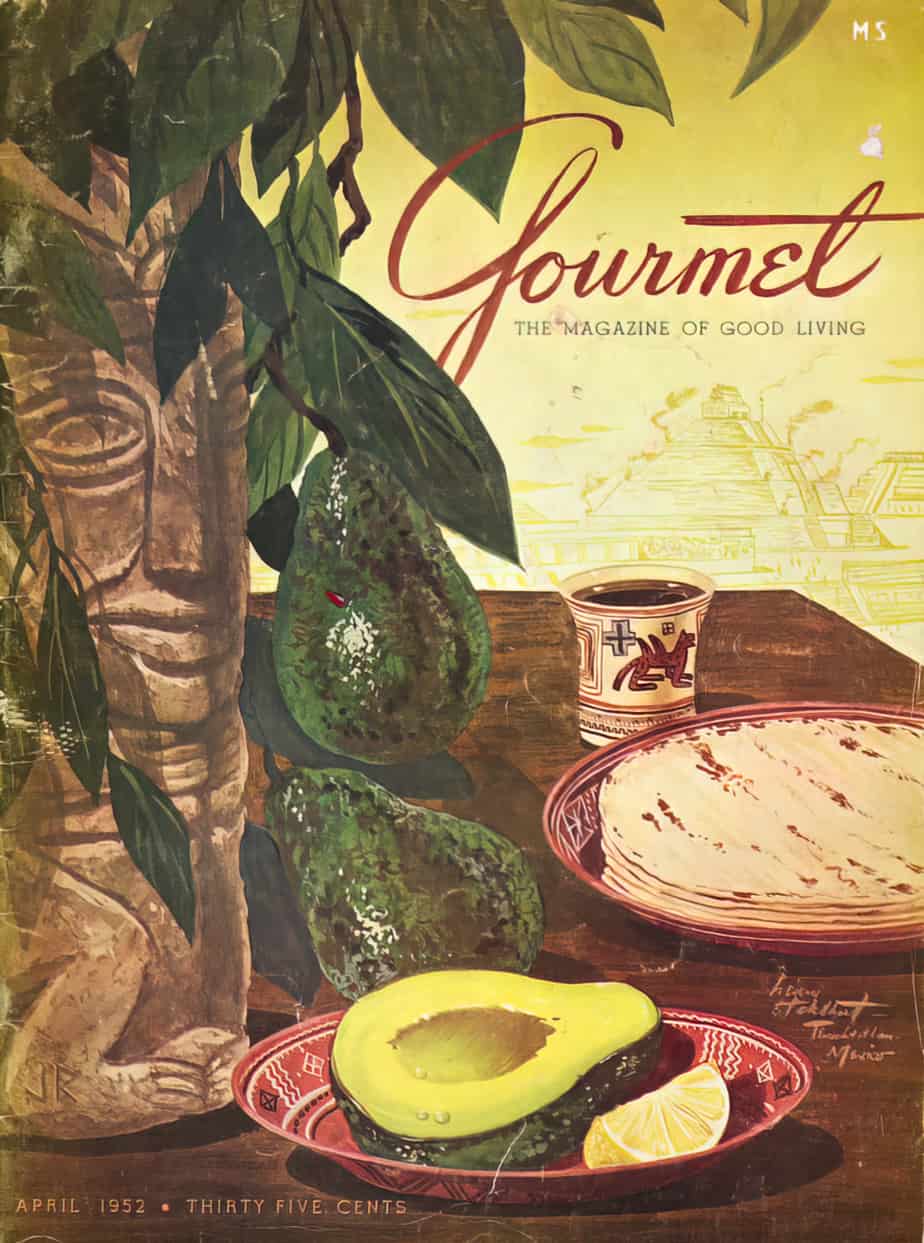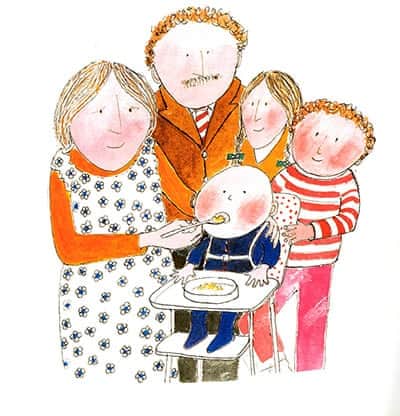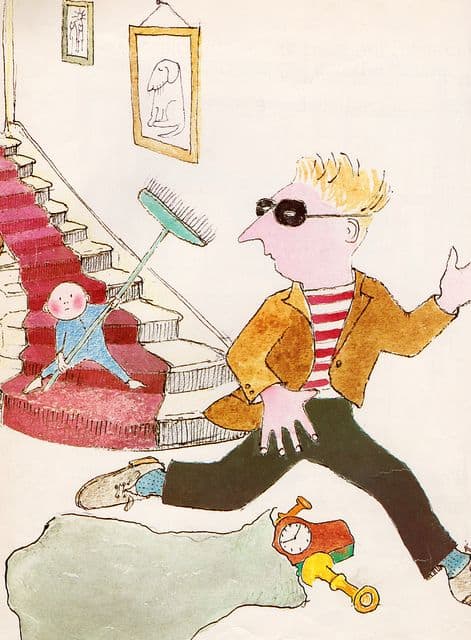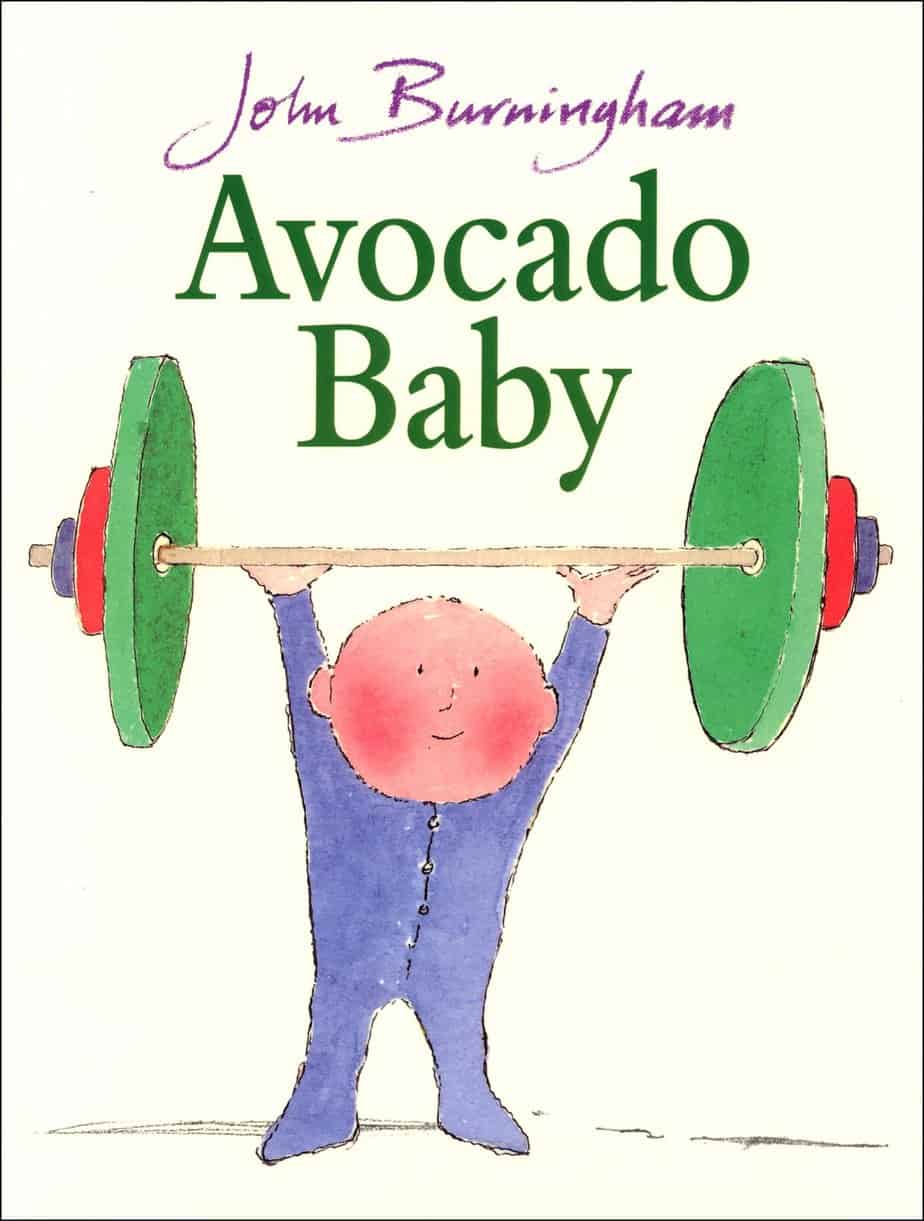Avocado Baby (1982) is a picture book written and illustrated by John Burningham. This was my first introduction to John Burningham. Our teacher read it in class. I was about six.
I don’t think I’d ever eaten an avocado at age six, so it functioned as a magical fruit, and didn’t strike me as odd that Burningham refers to them as ‘avocado pears’. I just checked: avocado is not related to the pear. Avocados were sometimes called avocado pears (in England) because of their pear-like shape.
Fruit is prone to changing its name between generations. Where I grew up, in New Zealand, my grandmother always called kiwifruit ‘Chinese gooseberries’. That’s what kiwifruit were called until the fruit marketing board got a hold of them and rebranded the ‘Chinese gooseberry’ for mass export, conveniently linking the furry brown skins with New Zealand’s most famous endangered bird. (Kiwifruit are not related to gooseberries.)
Then, when I left New Zealand, I realised only New Zealanders call kiwifruit ‘kiwifruit’ — the rest of the world shortens to ‘kiwi’, which is unsettling for a New Zealander self-identifying as ‘kiwi’. I am not a fruit!

SETTING OF AVOCADO BABY
Avocado Baby is set in England, but could happen in any number of English-speaking suburbs around the world.
The fruit of John Burningham’s story is not supposed to be familiar to child readers. The family finds the mystery fruit in their fruitbowl and it functions as a kind of magical potion. Burningham picked a fruit which exists in the world but which is sufficiently foreign to most young readers that we imagine it works like magic beans.
Note the other non-fruit items in the fruit bowl — the toy car, the pencil. This is like the typically messy/chaotic but warm houses of real families, and also suggests that if non-fruit items could make it into the bowl, anything could.
Babies need high fat diets and avocadoes mash well with banana. I fed our kid quite a few of them in the high-chair. I wonder if I’d been influenced partly by the plot of Avocado Baby.
STORY STRUCTURE OF AVOCADO BABY
PARATEXT
The Hargraves want their new baby to grow up big and strong. But the puny mite will hardly eat a thing. One day Mrs Hargraves finds an avocado in the fruit bowl and the baby gobbles it up. Soon, the strangest things start to happen…
MARKETING COPY
SHORTCOMING
The ‘main character’ of this story is the entire family. Their shortcoming is established on the first page — they are weak. This is a very simple, easy-to-understand, clearly-stated and very literal weakness.
But when the baby comes along, it will change all that. I’m tempted to call the baby ‘he’, but Burningham does not give a gender. With this being the early 1980s, we should be wary of assigning a male gender based on the lack of pink. That came later.

DESIRE
Burningham explicitly states that the Hargraves family wish for their baby to be strong. This is very fairytale.
OPPONENT
The burglar is only one of the opponents in this story.
Compare other home intruder storiess:
- Burglar Bill
- Mercy Watson Fights Crime
- Walter The Farting Dog
In all cases above, the burglars are white men with face masks, ‘Santa’ sacks and striped clothing. That’s the home intruder archetype, though they often arrive in pairs and carry sacks. They’re here to steal your silverware and electronics goods. (So, they’re burglars from the previous century.)

Other opponents are the bullies at the park. Again Burningham makes use of an Opponent Archetype feared by children.
The mother wants to feed her new baby up with nutritious food to make it grow big and strong. She doesn’t seem to realise this is a magic avocado.
PLAN
Importantly, the children suggest feeding their younger sibling the avocado pear. It’s important in stories for children that ideas come from the young characters.
THE BIG STRUGGLE
The story turns carnivalesque when the baby becomes so strong that it can defeat any enemy. Humour derives from inverting the essential trait of a baby (helpless and weak) and exaggerating it as far as it will go in the other direction.
Other picture book storytellers have inverted this characteristic of the baby to good effect. Boss Baby by Marla Frazee is an excellent stand-out example. I can also think of Bye Bye Baby by Janet and Allan Ahlberg, in which a baby decides to leave home.
The fight scenes of Avocado Baby function as a bit of a revenge fantasy — avenging a child’s greatest fears: night-time (and the possibility of home intrusion) and slightly older, hostile peers in unsupervised circumstances.
The baby crushes them all. Note that the baby is facing in the verso direction of the book as it jumps out of its pushchair to defeat the bullies.
The worst thing happens to the bullies when they are thrown into the pond.
ANAGNORISIS
AT some point the family realises (along with the reader) that nothing will defeat this baby; they are safe.
NEW SITUATION
The baby continues to get stronger and stronger, eating more avocado pears.
EXTRAPOLATED ENDING
With the price of avoados, I imagine his parents almost bankrupted themselves. Just as well they belong to a generation who had access to affordable housing.
What happened to Avocado Baby when he grew up? The timing’s wrong, oitherwise I’d say he turned into The Incredible Hulk. I mean, if you eat nothing but avocados you turn green, right? It’s basic science.
The green of the Hulk may have subconsciously influenced Burningham’s choice of fruit? I’ll never know that, but there is something magical about green skin. Why are witches green? Aliens? The Hulk? Green indicates unnatural difference.
The avocado (well, the ones with green skins) are a bit unusual because unless you know what avocados are, they look unripe. The avocado is also one of very few oily fruits. The avocado is the unnatural Wicked Witch/Alien/Hulk of fruits.
I submit for your consideration a rebranding.
RESONANCE
Never underestimate the power of a picture book. Avocado Baby was probably read to our class just the once, possibly twice, yet the story stayed with me.
FURTHER READING
This week on The Farm Report, host Erin Fairbanks talks with Nicole Vitello, Banana Coordinator at Equal Exchange. On this episode, Nicole talks about the food and fair trade industry, and how large corporations are easily able to control the market, leaving the consumer with less choices, the farmer with less profit, and an upbringing of unnatural products. This has been an ongoing issue especially within the world of avocados, which have risen in demand throughout the United States. Learn more about the behind the scenes of avocado production, from their regulations and inspections, to their arrival at your local market on today’s episode of The Farm Report!
“You’re starting to see better avocados out there. Volume is driving these imports, and you can [now] basically get fresher supply continually.” [30:10]
— Nicole Vitello on The Farm Report
Behind the Avocado

